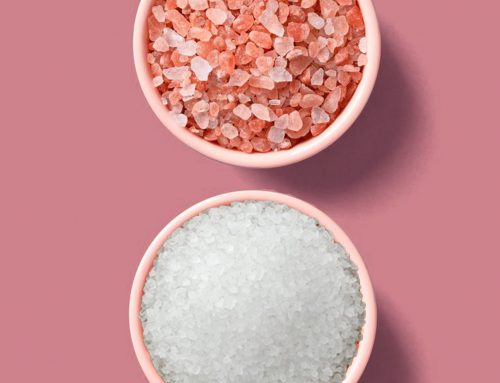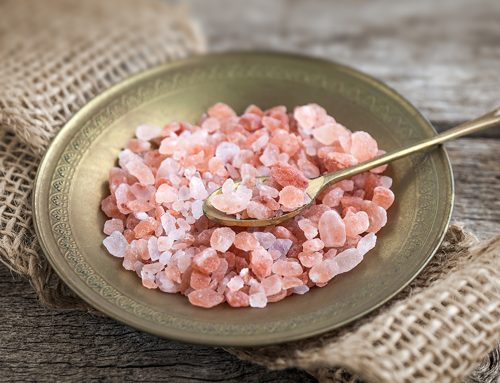Salt has been criminalized since obesity rates started climbing up in the ’90s. While it’s true that a diet high in sodium can be detrimental to cardiovascular health, we shouldn’t cut out salt from our lives. This is because it is essential for maintaining a balance between various biological processes. Moreover, the antimicrobial, antibacterial and anti-inflammatory properties of salt make it an important ingredient in medical formulations.
After all, salt was used extensively by various ancient civilizations: Greeks, Romans, Egyptians, and Arabs to name a few; for its medicinal properties have been documented for a long in history. From wound treatment to digestive aid, its importance has not decreased even in the 21st century. Its medicinal properties have now been very well researched. Salt can be found in everyday items such as pomades, toothpaste, and soap. However, it is also used to make saline water and an ingredient in spa treatments One of the most popular spa therapies includes the use of pink salt for halotherapy. Practiced extensively in Eastern Europe it has been hailed as a way to improve pulmonary health.
What is pink salt?
Almost 800 million years ago a shallow sea on the Indian Plate evaporated. This was followed by a thrust of the Indian plate which resulted in a rock formation. Over the course of millions of years, multiple layers of fossilized rock along with halite can be found across the Himalayas. Halite is also known as pink salt or rock salt which has been mined commercially for hundreds of years. The majority of Himalayan pink salt is mined from the Salt Range north of the Jhelum river in Punjab, Pakistan. One of the biggest pink salt caves is the Kehwra Salt Mine in Jhelum, which exports almost 400,000 tonnes of pink salt every year. It has been hailed as a healthy and mineral-rich alternative to regular salt for years.
Is pink salt really a healthier alternative to table salt
Studies indicate that the increase of plastic debris in water bodies has resulted in presence of microplastics in table salt and sea salt sold worldwide. This is because these types of salt are produced by pumping saltwater which is subsequently evaporated. Particles of microplastic remain despite the evaporation and make their way into the end product.
Pink salt, on the other hand, is not extracted from seawater but from rock formations that are not surrounded by any water body, and as result, it has remained untouched by pollution. Moreover, pink salt is still drilled by hand and minimally processed. It is devoid of anti-caking agents. Hence, they do not contain plastic particles or traces of other chemicals.
Another reason why pink salt is a healthier alternative to other types of salt is that it contains trace minerals. Most types of salt are 100% sodium chloride. Pink salt on the other hand is 95 to 98% sodium chloride while 2% to 5% is made up of a variety of trace minerals such as potassium, magnesium, calcium, manganese, and iron.
The presence of these trace minerals is the source of its aesthetic pink hue has made it popular among young adults. Pink salt granules come in different shades. The color difference indicates a higher presence of certain minerals. For example, darker pink granules contain a higher quantity of calcium and potassium while colorless granules have a higher quantity of magnesium.
Pink salt is not, however, merely beloved for its aesthetic appeal. Its many health benefits make it a popular choice for cooking, spa treatments, and home décor. One of the most popular spa treatments is halotherapy.
What is halotherapy and why is it beneficial?
From the Greek word, “halos” meaning salt. It is the use of salt for a medicinal purpose, such as drinking salt water or spending time in natural or artificial salt caves. Using salt caves to treat patients with respiratory problems was a popular treatment used by Mediterranean cultures. Patients in antiquity would enter natural salt caves and would perform certain physical or breathing exercises or sit and relax in the caves.
Halotherapy became popular in Eastern Europe in 1800 when two physicians one in Poland another in Europe noted that salt mine workers suffered from fewer chronic respiratory illnesses than workers from in other mines and people who spend time in salt caves feel healthier.
Though there are very few natural salt caves, there are many treatment rooms that mimic salt caves Since the explosion of popularity of halotherapy in the U.S many spas have attempted to re-create the conditions of a dry salt cave by using pink salt. One of the ways this is achieved is to cover walls with pink salt blocks. They provide comfortable chairs and cover the floor with pink salt granules. To create a dry fine aerosol environment spa’s make use of halogenators which are placed in the operator’s room, to provide a steady stream of dehydrated, filtered air saturated with fine salt particles. The halotherapy sessions usually last 30 minutes for children and 60 minutes for adults. After each session, the room is ventilated.
Some of the proposed benefits of halotherapy include:
- Immunity boost
- Improvement in skin condition, nervous system, cardiovascular system
- Healthier respiratory system
- Better mental or emotional State
Halotherapy and chronic pulmonary conditions
According to the CDC 90% of the 3.8 trillion dollar expenditure is used to treat chronic and mental illnesses. These lead to a significant economic and health impact in the U.S. Chronic Obstructive Pulmonary Disease and Asthma are some of the conditions that cost the system besides cancer and diabetes.
Halotherapy is a drug-free, non-invasive therapeutic method that can be used to support the treatment of chronic respiratory illnesses. Some of the proposed health benefits of halotherapy to the respiratory tract include
- improving lung function
- clearing pollen from the lungs
- reduce inflammation
- provide relief to throat, larynx, or sinus problems
- help with allergy problems
Though there is widespread skepticism on halotherapy and the criticism that it is merely a means to improve a patient’s wellbeing, the research, and the community at large support the idea that halotherapy does deliver health benefits. Many patients concur with the idea that halotherapy is an effective method to treat their respiratory ailments. Many of them cite that after a session they observe a decrease in cough frequency, ease in expelling of sputum, and a decrease in its viscosity. They have also observed an improvement in their sleep cycle.
Research on patients with various chronic respiratory ailments such as chronic bronchitis, bronchial asthma, and chronic obstructive broncho pneumopathy showed that using halotherapy decrees the human body’s sensitivity and the infectious inflammatory process that occurs in bronchial asthma. Generally, a halotherapy session triggers an anti-inflammatory response from the body.
A review of existing literature on halotherapy’s effectiveness at treating Chronic Obstructive Pulmonary Disease supports the idea that halotherapy is beneficial to patients with chronic respiratory illnesses. It revealed that after running several tests, patients did showcase an improvement in various lung function tests such as forced vital capacity, forced expiratory volume in 1 second. Moreover, there was also an improvement in oxygen saturation, partial pressure of oxygen in arterial blood. For example, the oxygen saturation in patients went from 90% to 98%.
A study indicated that the quality of life of patients improved by reducing the rate of hospitalization, reducing fatigue, and increasing physical tolerance. In addition to the health benefits, 50% of patients saw such a drastic improvement that they were able to discontinue their inhaled corticosteroid medication. At the same time, 1/3rd of patients also continued halotherapy sessions in addition to their medication.
Despite the claims that salt is detrimental to human health, the importance of salt to human health can not be denied. Pink salt in particular is a healthy alternative to table salt as it is rich in minerals and devoid of microplastic particles and anti-caking agents. Thank these properties, it is used extensively in Halotherapy as a way to support chronic pulmonary diseases such as COPD. Some of the benefits of halotherapy include improved oxygen saturation and forced vital capacity. It also helped patients improve their lifestyle by reducing rates of hospitalization, physical tolerance, many patients were even able to abandon their inhaled corticosteroid medicine. In conclusion, the treatment of respiratory illnesses thanks to pink salt is one of the many health benefits of this wonderful mineral.
Bring an authentic pink salt experience to your table. PinkKehwra imports the authentic mineral-rich pink salt straight from the Himalayas to your doorstep. We know importing is hard, that is why we do all the heavy lifting. With our services, cut out the middlemen and buy directly from us. Your order will be delivered as quickly as possible at the best price whether you are an individual, family, or an industrial customer. We have warehouses in multiple cities to help deliver your order. Contact us at 202 2882622 or visit us at 1221 24th St NW #606 Washington, D.C 20037

